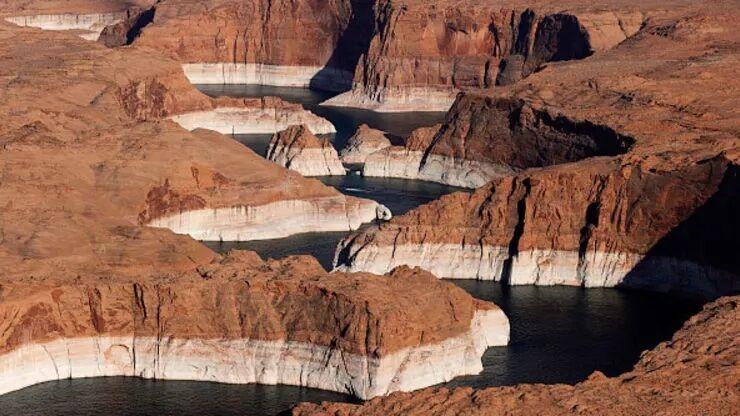Several recent newspaper articles have focused on the Colorado River, because of the historically low water levels in Lake Powell and Lake Mead. A recent follow-up in Greenwire asked the rhetorical question, “Could the Colorado River Compact adapt to go with the flow?”
The question was only rhetorical, but should it be? Actually, water leaders in all the states downstream from Colorado have been hinting at that idea for years. That’s because they all want more water than they are entitled to, under the 1922 Interstate Compact that determines how much water is allocated for each state. A brief refresher course on that Compact helps illuminate the issue.

In the 1922 Compact, Colorado River water was divided equally between Upper and Lower Basins, based on an annual flow of about 15 million acre-feet (MAF), the historical average at the time. The Lower Basin states of California, Nevada, and Arizona were allocated 7.5 MAF of water, as were the Upper Basin states of Colorado, Wyoming, Utah, and New Mexico. California convinced Congress to distribute the Lower Basin’s half by population: 4.4 MAF for California, 2.8 MAF for Arizona, and 0.3 MAF for Nevada. The Upper Basin states agreed on distribution of their half in 1948, allocating percentages of the annual flow, not fixed amounts. Colorado got 51.75 percent (of the Upper Basin half), Utah 23, Wyoming 14, and New Mexico 11.25.
For decades, California grew faster, using all its share, along with unused portions of the other states’ shares. California also opposed virtually every attempt by the other states to develop their entitled water. Colorado still uses roughly a million acre feet less than its legal share, despite frequent water shortages. Yet the historic interstate agreement is controversial again, because it allocates more water than is really there. Hydrologists over the last decade say the actual flow of the River is not 15 MAF, but more like 11 MAF. So, state leaders debate how to administer the River, how to operate the main reservoirs (Mead and Powell), and how to deal with a “call,” or demand, from the Lower Basin during droughts. The Upper Basin’s mechanism for making the required water deliveries to the Lower Basin is Lake Powell, but it has been drained so low – 94 feet below its capacity – that its ability to meet that obligation is in doubt.
Whenever this issue is raised among the states, the others say Colorado’s entitlement is unrealistic, because the River just doesn’t have as much water as once thought. Therefore, we are told, Colorado simply cannot get any more water, the Compact notwithstanding.
When any Colorado entity proposes developing more water, they are told that the legal documents were flawed, and thus cannot govern these decisions. We must be flexible, they say, and administer the dams and reservoirs in a more realistic way, acknowledging the real amount of water actually in the system. However, guess what is the one and only thing virtually none of the water leaders in any of the other six states want to do? Administer the dams and reservoirs in a more realistic way, acknowledging the real amount of water actually in the system.
That’s right. They tell Colorado to be realistic, but they have no interest in doing that. Why? Because that inevitably leads to an inconvenient conclusion – less water for every state. That won’t do – they want less water for Colorado, but more for California, Nevada, and Arizona.
The Greenwire story may have intended to raise an abstract question. Yet in doing so, it raised precisely the right question. Namely, if the River really only averages 11 MAF, then why not adjust the Compact administration to acknowledge that? Don’t alter the Compact – just its administration. Continue to split the water in half between Upper and Lower Basins, keeping all the relative shares the same. If that were the agreement, Colorado would actually get about the same amount it now uses. But the Lower Basin share would be 5.5 MAF, not 7.5, and California would get 3.2 MAF, not 4.4. I once suggested that approach in a meeting of the seven state representatives. After the gnashing of teeth and wringing of hands, the idea was summarily dismissed.
Remember, the Upper Basin allocated its share of the River by percentages from the beginning. Only the Lower Basin still thinks it makes sense to dictate specific amounts of water, regardless of annual snowpack, forest overgrowth, or climate change. If they really want fairness, they will simply go with the flow.




Comments on this entry are closed.